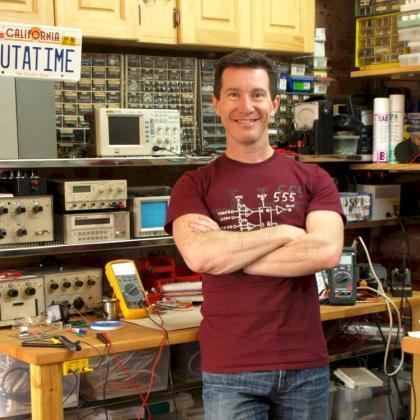Nationality Australian Website www.eevblog.com Channel name EEVBlog Name David Jones Residence Sydney, Australia | Occupation Video blogger Pseudonym Dave Jones Years active 2009–present Role Electronic Engineer | |
 | ||
Dave Jones - make a living on YouTube (or die trying)
Dаvid L. "Dave" Jones is аn Australian electronic engineer and video blogger. He is the founder and host of EEVBlog (Electronics Engineering Video Blog), a blog and YouTube channel targeting electronics engineers, hobbyists, hackers and makers, with the tagline, "No script, no fear, all opinion." His content has been described as a combination of "in-depth equipment reviews, crazy antics, and lack of political correctness."
Contents
Before becoming a full-time blogger, he designed FPGA boards for the EDA company, Altium. Jones is founder and co-host of The Amp Hour, an electronics engineering radio show and podcast, and is a judge for the Hackaday prize.
Batteriser criticism
In mid 2015 Jones published a video blog disputing the claims made by the manufacturer of a then unreleased battery life extender, the Batteriser. Batteroo, the company behind the product, disputed Jones' arguments and published a number of demonstration videos in response. Jones' videos received a number of "dislikes," which he alleged was an attempt to demote the their rank.
Products
Jones designed and marketed the μCurrent, an electrical current testing device, and the μWatch. a scientific calculator watch.
μWatch
In 2008, Jones released specifications for the µWatch, a scientific calculator watch that could be purchased in kit form or built from online plans and off-the-shelf parts. It was designed as a replacement for Jones' defunct Casio CFX-400, the last scientific calculator watch since 1985. The µWatch is built around a 16-bit processor and 64K of flash memory, and runs on open source software.
μCurrent
In the April 2009 edition of Silicon Chip, Jones published plans for the μCurrent, an open source precision current adapter for multimeters. He also assembled and marketed the completed unit as a solution for multimeter burden voltage issues that arise when measuring sub-microamp currents. In 2013, Jones used a Kickstarter campaign to crowd-fund an updated design, the μCurrent GOLD, which is the current version of the product.
